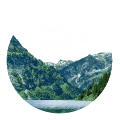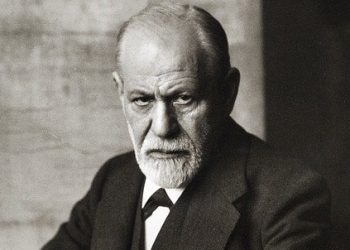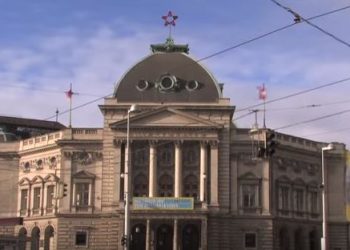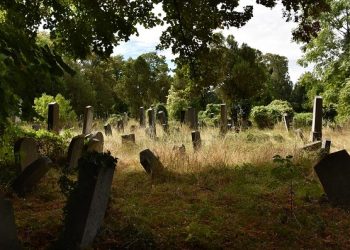The Art History Museum is largely based on the collections of the Habsburg family. The exhibits in the museum include works and antiquities from ancient times up to the 18th century.
The museum has 5 main wings. The central wing is the Picture Gallery, which contains important works from the Middle Ages to the 18th century. As part of the painting exhibition in this wing, there is the largest collection of works by Bruegel, as well as works by other artists such as Rembrandt. The other museum wings are: the Greek and Roman Antiquities wing, the Coin Collection wing, the Ancient Egypt and Near East wing, and the Kunstkammer (Art and Sculpture) wing.
In fact, the Art History Museum has another branch located in the new wing of the Hofburg Palace. This wing is called the Neue Burg. You can read more information in our comprehensive article on the Hofburg Palace and its museums.
Purchase tickets online for fast-track entry to the Art History Museum.
The Story of the Art History Museum
In 1871, Emperor Franz Joseph I ordered the construction of a magnificent museum quarter (a plan that was never fully realized). He entrusted the construction and design to the architects Gottfried Semper and Karl von Hasenauer. The two architects worked from 1871 to 1891 on the construction of two large museum buildings, one opposite the other, on either side of Maria-Theresien-Platz. The elaborate buildings were designed just like the Habsburg palaces, with spacious rooms, beautifully decorated walls, ceiling paintings, marble floors, and royal furniture. The facade of the building is in the Neo-Renaissance style, and at its top is an octagonal dome 60 meters high.
After the completion of the museums’ construction in 1889, a festive ceremony was held in which Emperor Franz Joseph announced the official opening of the Natural History Museum and the Art History Museum. However, the final completion of the construction was only in 1891.
A video about the museum:
The Museum’s Collections and Exhibitions
The main works and antiquities in the museum originate from the collections of the Habsburg family. The important paintings, art objects, and antiquities were included in the collections of Ferdinand of Tyrol, Emperor Rudolf II, and Archduke Leopold Wilhelm. These collections are displayed by wing in the museum:
The Picture Gallery
The Picture Gallery is the heart of the museum and is considered one of the largest and most important of its kind in the world. The main focus of this wing is the 16th and 17th centuries. There are paintings by artists such as Pieter Bruegel the Elder, Rembrandt, Vermeer, Raphael, and more.
The famous paintings in this wing are:
- The Art of Painting, Johannes Vermeer (1665-1667)
- Hunters in the Snow, Pieter Bruegel the Elder (1565)
- The Return of the Herd, Pieter Bruegel the Elder (1565)
- The Peasant Wedding, Pieter Bruegel the Elder (1567)
- The Tower of Babel, Pieter Bruegel the Elder (1563)
- Children’s Games, Pieter Bruegel the Elder (1560)
- The Nest Robber, Pieter Bruegel the Elder (1568)
You can find explanations in English for 52 works of art displayed in the museum at this link.
The Egyptian and Near Eastern Collection:
The collection of antiquities in this wing is considered one of the most important in the world. There are over 17,000 objects in this wing, the oldest of which date back to 3500 BC. The antiquities originate from Egypt, Nubia, the Eastern Mediterranean, Mesopotamia, and the Arabian Gulf. The wing itself is divided into 4 parts: Cult and Burial, Cultural History, Sculpture, and the Development of Writing. The important exhibits in this wing are: the decorated chapel, several sarcophagi and coffins, animal mummies, the Book of the Dead, figurines, and everyday objects.
The Greek and Roman Antiquities Collection:
The 2,500 exhibits in this wing present the cultural development from the Bronze Age to the early Middle Ages. There are several ancient exhibits that make this display unique, including various amulets and pendants, as well as gold treasures, ancient vases, and exceptional sculptures.
The Coin Collection:
The coin collection is one of the five most important coin collections in the world. The collection contains about 600,000 items from different periods over 3,000 years. The collection includes not only coins but also banknotes and medallions. Only about 2,000 items from the collection are displayed in the museum.
The Kunstkammer (Art and Sculpture) Wing:
This wing displays about 2,200 interesting and varied works of art. You can be impressed by rare works by artists like the Italian goldsmith Benvenuto Cellini or by exceptional sculptures like the Krumau Madonna statue. In addition, there are valuable clocks, strange scientific instruments, board games, and more.
Essential Information for Visiting the Art History Museum
Opening Hours:
- June – August:
- Daily from 10:00 AM to 6:00 PM
- Thursday from 10:00 AM to 9:00 PM
- September – May:
- Tuesday to Sunday from 10:00 AM to 6:00 PM
- Thursday from 10:00 AM to 9:00 PM
- Monday – Closed
Last admission is half an hour before closing time.
Admission Costs at the Ticket Office (cheaper tickets can be purchased online):
- Adult: €23
- Students (up to age 25), Seniors: €18
- Children and teenagers up to age 19: Free
- Audio guide: €6
Please note: On the first Sunday of the month, admission to the museum is free.
You can purchase tickets online and bypass the queue at the museum entrance.
If you are not interested in entering the museum but would still like to look inside, you can take a virtual tour of the museum.
Address:
Maria-Theresien-Platz, 1010 Vienna
How to get to the museum by public transport?
Due to the museum’s central location, it can be easily reached from all the main attractions in the first district. Whether you are visiting the Hofburg Palace or its royal gardens or are at the Parliament and City Hall, you can walk along the Ringstrasse until you reach the museum.
If you are arriving by public transport, you can take the underground, the orange line (U3) or the purple line (U2), and get off at the Volkstheater station. From there, you will have to walk about 4 minutes to the museum.
Another option is to take the trams on the Ringstrasse and get off at the Dr. Karl Renner Ring/Burgring station. Tram lines 1, 2, D, 46, 49, and 71 stop at this station. From there, it is a 5-minute walk to the museum.
Map:
If you are planning to go to this museum, you should also read about the Natural History Museum, which is right opposite. It is also a wonderful museum and is definitely ideal to combine if you are already in the Maria-Theresien-Platz area. If you have had enough of museums, you can continue on foot towards the Mariahilfer Strasse shopping street, which is about a 5-minute walk away. This is a long street with many shops of all kinds. Read more about shopping in Vienna.


















